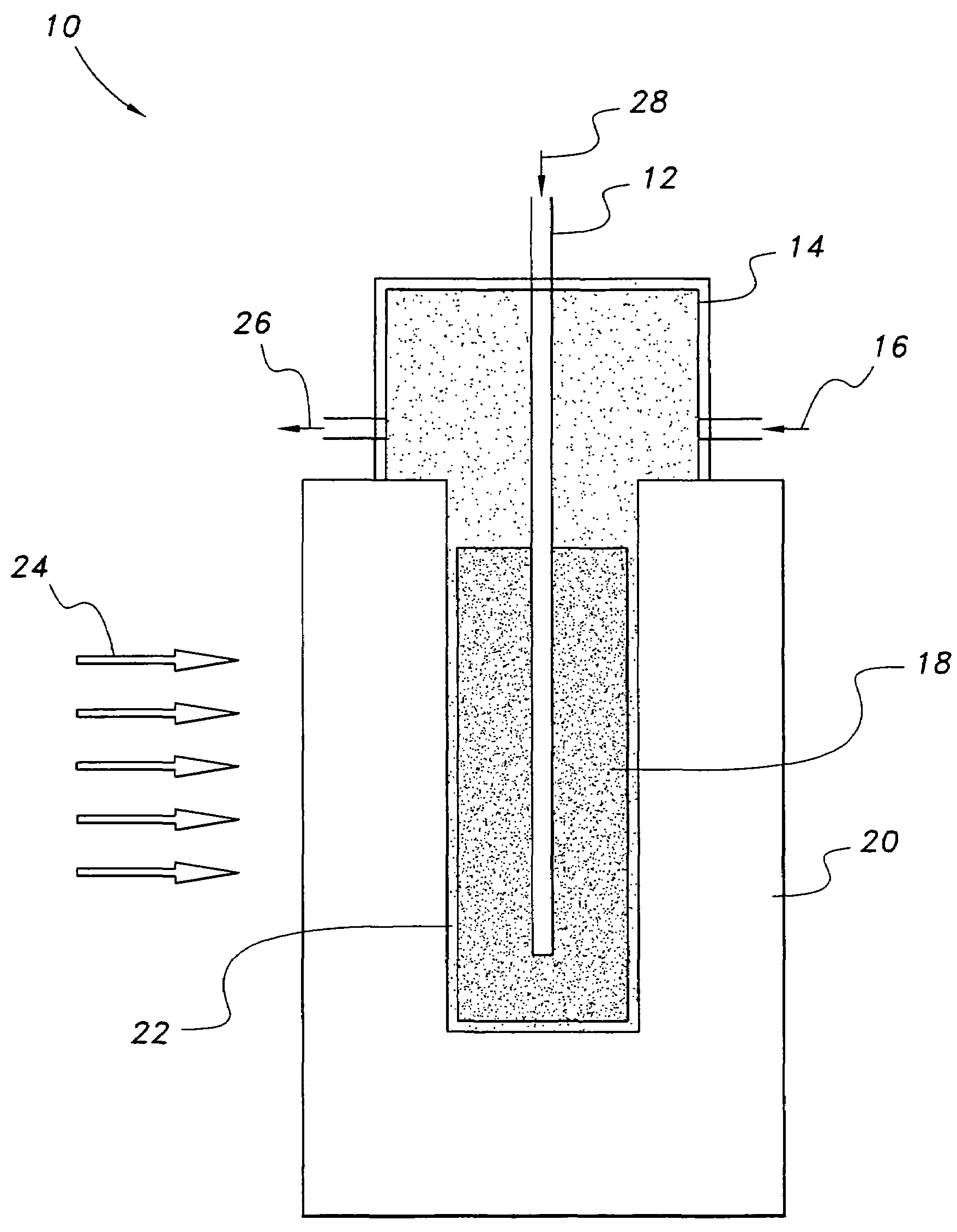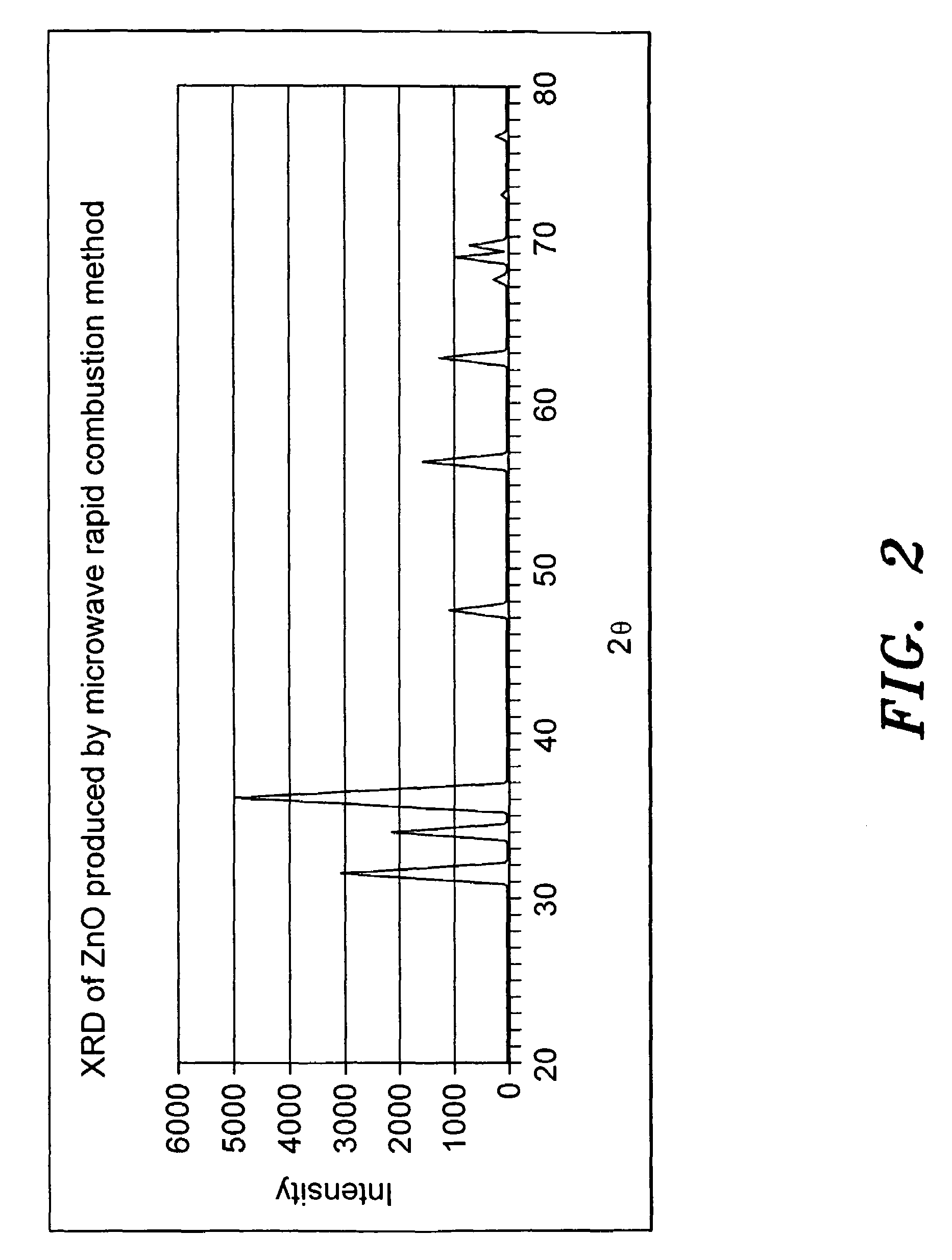Method for synthesizing metal oxide
a metal oxide and nanopowder technology, applied in the direction of zinc oxide/hydroxide, energy-based chemical/physical/physicochemical processes, turning machines, etc., can solve the problems of increased cost, large amount of wastewater, and inability to use solvents, so as to increase the length of the susceptor tube, the effect of increasing the quantity of nanopowder
- Summary
- Abstract
- Description
- Claims
- Application Information
AI Technical Summary
Benefits of technology
Problems solved by technology
Method used
Image
Examples
example 1
[0025]This example describes one process for producing ZnO nanopowder using the microwave rapid combustion method.
[0026]The susceptor tube was placed into the thermal shielding and placed in the interior of a conventional 1.5 kW microwave oven. The oven was started and the temperature of the susceptor tube was monitored with a thermocouple. After approximately four minutes, the temperature of the susceptor tube was 700° C. A 2-gram quantity of zinc (Zn) was inserted through the ceramic inlet tube. After 15 seconds, the Zn evaporated and interacted with the residual oxygen inside the susceptor tube. The resulting combustion formed zinc oxide (ZnO) vapor. The vapor exited from the susceptor tube and interacted with the air to condense as ZnO nanopowder. The nanopowder deposited on the interior surface of the collecting device, which, for this example, was an ordinary beaker. The nanopowder was collected and characterized. FIG. 2 is an x-ray diffraction (XRD) pattern of the ZnO nanopow...
PUM
| Property | Measurement | Unit |
|---|---|---|
| temperatures | aaaaa | aaaaa |
| temperature | aaaaa | aaaaa |
| temperature | aaaaa | aaaaa |
Abstract
Description
Claims
Application Information
 Login to View More
Login to View More - R&D
- Intellectual Property
- Life Sciences
- Materials
- Tech Scout
- Unparalleled Data Quality
- Higher Quality Content
- 60% Fewer Hallucinations
Browse by: Latest US Patents, China's latest patents, Technical Efficacy Thesaurus, Application Domain, Technology Topic, Popular Technical Reports.
© 2025 PatSnap. All rights reserved.Legal|Privacy policy|Modern Slavery Act Transparency Statement|Sitemap|About US| Contact US: help@patsnap.com



